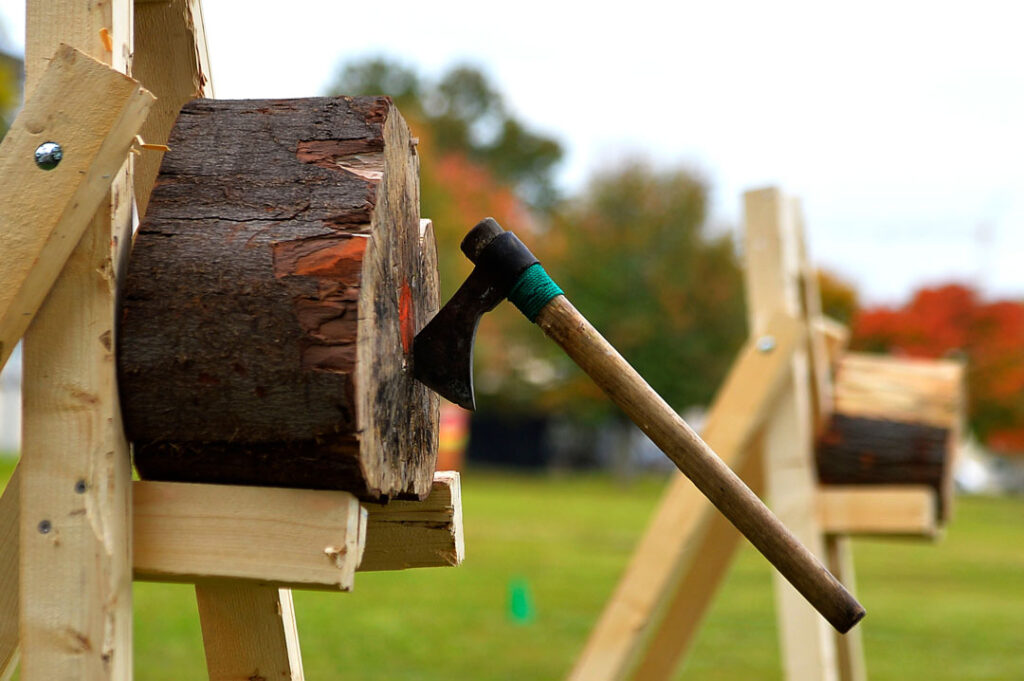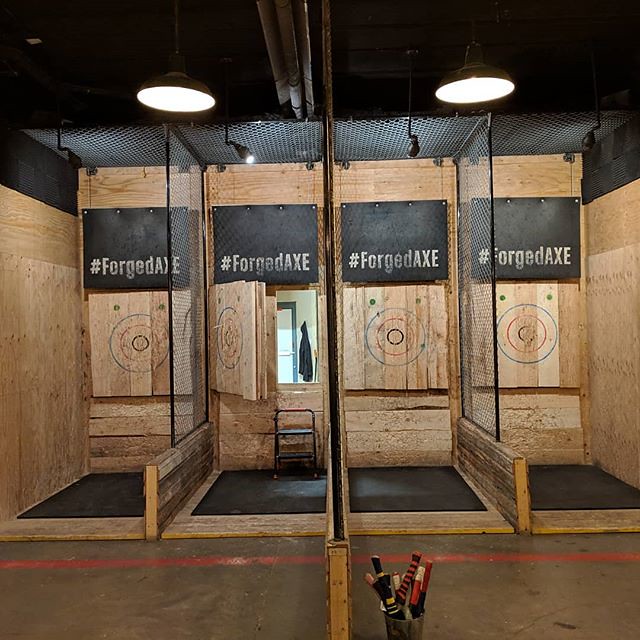An axe is an ancient tool dating back to early human civilization, as early as the stone-age. It played a substantial part in much of our development, especially from the Neolithic period (near the end of the stone-age) through the late 20th century. It’s a very versatile tool, historically used for felling trees, cutting meat, digging roots, or doing battle. It was also used by ancient cultures for ceremonies and rituals.
During the accelerated growth of firearm production during the 19th and 20th centuries, the axe has been entirely phased out of military use. Logging was a massive industry in America during the 20th century, and axes were used heavily. However, nowadays, even logging companies no longer use tree-felling axes for the most part (lumberjacks now use chainsaws or fancy machinery like this). In this article, we’ll focus more on modern-day applications for axes, primarily their uses as tools.
Now that we’ve touched a bit on history let’s get down to business. Despite what you may think, axes actually come in many different shapes and configurations—all typically designed to suit a specific purpose. When you think of an axe, the image that comes to mind is probably that of a hatchet or a felling axe, so we’ll start with those.
Felling Axe
The felling axe is used for what it’s named—felling trees. Felling axes have a variety of different weights, shapes, and handle types to account for different circumstances. The bit (blade of the axe) of the axe has to be extremely sharp on a felling axe. The felling axe looks similar to the splitting axe, but the bit of the splitting axe is more wedge-shaped to split small individual logs efficiently.
Hatchet
The hatchet is a smaller and lighter axe meant for general purposes. An adequately designed hatchet is lightweight, portable, and perfectly balanced. They are primarily used for camping, traveling, or survival purposes. Hatchets are great for cutting up kindling for a fire or cutting through roots. The tomahawk closely resembles the hatchet, though it has a thinner, curved blade and is designed for easy axe throwing.
Firefighter’s Axe
The firefighter’s axe, or pick head axe, is a pick-shaped axe used for breaking through doors and windows. The axe is typically a bright red color to enable easy spotting during emergency situations. The distinct difference of this axe is the side opposite of the blade, the butt. The butt of a fireman’s axe is pointed, resembling a pick. The pick-shaped end excels at a couple of different tasks the blade end can’t quite as easily accomplish. Typical uses of the pick end include breaking through a window or to cut-out a small ventilation hole in a roof or wall.
Pickaxe
The final most commonly used axe in modern-day applications is the pickaxe. Historically it was used primarily by resource miners and railroad workers. It can still be used for those same applications today, but machinery has largely reduced its use. It’s now commonly used for landscaping where precision is needed or other construction based applications such as breaking up hard slabs. Rather than a flat blade at the end, a pickaxe has a long pointed end. Pickaxes typically consist of two large pointed ends or one pointed end with a flat blade on the other side.
All of these axes serve a variety of modern-day purposes, though they’re certainly not used as much now as they used to be. It’s 2019, why use an axe when you can use a chainsaw instead? Don’t get us wrong—we love using axes at axemanshall. But we’re also happy we’re no longer limited to just a hand-axe when it comes to cutting down a tree.




